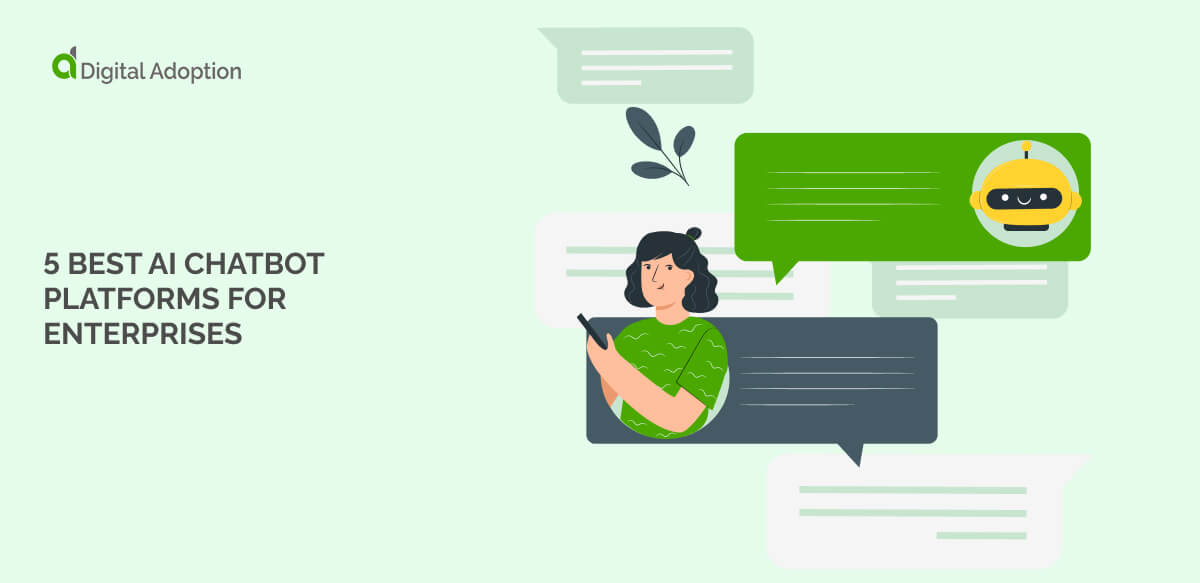IT resiliency should be a top priority for every company in today’s uncertain world.
The events of 2020 made this very clear.
Those companies that have robust digital strategies, IT systems, and IT policies were better able to withstand the disruption brought about by COVID-19.
On the other hand, digitally immature companies were forced to build out basic digital capabilities – and as a consequence, they frequently lost ground to companies that were digital-ready.
Below, we’ll look at a few action steps that companies should take in order to foster IT resiliency, digital maturity, and, ultimately, business growth.
7 Tactics for Enhancing IT Resiliency and Digital Maturity
Many research firms suggest that the disruptions we witnessed in 2020 are only the beginning. In fact, some, such as the World Economic Forum and Accenture, state that disruption will become the new normal.
Given the increasing speed of digital transformation and the impending adoption of new technologies such as AI, VR, AR, 3D printing, and blockchain – among others – we can certainly expect to see further disruptions down the road.
To withstand inevitable changes such as these, not to mention unpredictable ones, such as crises and financial downturns, it is crucial to build IT resiliency and digital maturity as soon as possible.
Here are a few ways to do just that:
1. Invest in cybersecurity
Cybersecurity has always been important, but there several reasons why it should top the IT leader’s agenda.
One reason is the continued evolution of tech. The more that new technology dominates the workplace and the business world, the more vulnerabilities become exposed. When the work-from-home (WFH) model was introduced in 2020, for instance, IT suddenly had to create new protocols and procedures to cope with these changes.
Another is that new technology itself introduces new vulnerabilities. Cloud computing, edge computing, IoT, and other new forms of technology promise new forms of value. At the same time, however, they also engender new attack vectors.
2. Create digital training programs for employees
In the digital workplace, employee training is more relevant than ever.
When employees have the right digital skills, they can:
- Learn new software more quickly
- Adapt to changes in workflows
- Drive digital transformation more successfully
In the event of a disruption, for instance, a well-trained workforce can adopt digital tools, workflows, and practices more quickly. This improves IT resilience and, as a result, business resilience.
3. Use predictive analytics to inform decisions
Predictive analytics and prescriptive analytics can model multiple future scenarios.
For instance, a business that needs to plan for a post-COVID recovery should be examining and planning for multiple scenarios.
With the right data-driven methods and the right mindset, analytics can offer a great deal of insight.
4. Put digital at the heart of the business
Digital is both the future and the present.
To stay relevant today and tomorrow, therefore, it is mandatory to put digital technology at the heart of operating models, business models, and business strategy.
In other words, developing a digital strategy shouldn’t simply focus on implementing new technology – technology should drive the business.
A technology-driven organization will use technology to:
- Differentiate itself from competitors
- Create new forms of customer value
- Optimize the customer experience
- Improve the employee experience
By transforming the organization into a technology-driven organization, forward-thinking companies will stand a better chance of surviving in the digital-first economy.
5. Know the difference between IT resiliency and system resiliency
System resilience is a concept that covers the technical side of IT resilience.
That is, it emphasizes building capabilities into systems, infrastructure, and processes. The emphasis is usually on creating business continuity plans, disaster recovery plans, risk prevention, and detection mechanisms.
IT resiliency, on other hand, is broader.
It should link business resilience to system resilience. On the one hand, it should focus on creating recovery and response plans. But IT is a strategic business function, so it should look forward into the future and embrace other concepts covered here, such as the human side of IT, digital innovation, workforce training, and agile business methods.
6. Dedicate resources to digital innovation
Typically, organizational agility is linked to resilience – and this makes sense, since agile processes are designed with responsiveness in mind.
Innovation, however, is aggressive, forward-thinking, and creative. The aim is to create new forms of value in the marketplace.
At first glance, innovation may seem to be the opposite of resilience.
However, since innovation drives the economy, only the most innovative businesses will thrive in tomorrow’s business landscape.
7. Perform stress tests
Stress tests analyze how well a business would perform under certain scenarios.
For instance, stress tests could assess the impact of certain types of disruptions, such as:
- Financial or economic disruptions
- Natural disasters or pandemics
- Supply chain disruptions
- Cyber attacks
Each of these stress tests will provide invaluable information and insight that can be used in business continuity plans, disaster recovery plans, and IT resilience strategies.




![4 Best AI Chatbots for eCommerce [2025]](https://www.digital-adoption.com/wp-content/uploads/2025/03/4-Best-AI-Chatbots-for-eCommerce-2025-img-300x146.jpg)


![13 Digital Transformation Enablers [2025]](https://www.digital-adoption.com/wp-content/uploads/2025/02/13-Digital-Transformation-Enablers-2025-img-300x146.jpg)



![4 Best AI Chatbots for eCommerce [2025]](https://www.digital-adoption.com/wp-content/uploads/2025/03/4-Best-AI-Chatbots-for-eCommerce-2025-img.jpg)

